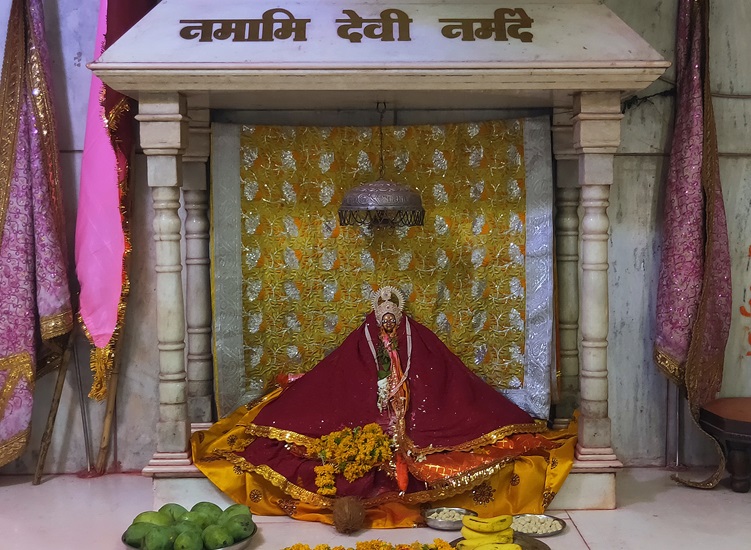Maa Narmada Temple

Shri Bade Dadaji and Shri Chhote Dadaji were devout followers of Maa Narmada. The temple of Maa Narmada is located within the Dada Darbar premises, where daily worship and Naivedya are offered with devotion.
At the Samadhi of Shri Dadaji, only the Aarti of Maa Narmada is performed as a mark of reverence and spiritual significance.
All devotees are respectfully encouraged to visit and receive the divine darshan of Maa Narmada during their visit to Dada Darbar.
Significance
The Narmada, also known as Rewa or Mekal Kanya, is the largest river in Central India and the fifth largest in the Indian subcontinent. It flows entirely within India and is the third-largest river in the country after the Ganga and Godavari. The river flows for 1,312 kilometers in the west direction, from its origin in Madhya Pradesh's Satpura hills to its confluence with the Arabian Sea at the Gulf of Khambhat in Gujarat, passing through Madhya Pradesh, Maharashtra, and Gujarat.
Along with the Ganga, Yamuna, Godavari, and Kaveri, the Narmada is considered one of the five holiest rivers in India. Bathing in its waters is believed to cleanse all sins. According to the Puranas, at one point the Ganga became polluted due to the millions of people bathing in it. To purify herself, Ganga took the form of a black cow and bathed in the Narmada River. The Narmada is also considered more ancient than the Ganga. It is the only river in India that is circumambulated by devotees. The Narmada Parikrama is considered the most difficult and sacred pilgrimage, where ascetics and pilgrims travel from Bharuch to the river’s source in Amarkantak, covering a total distance of 2,600 kilometers.